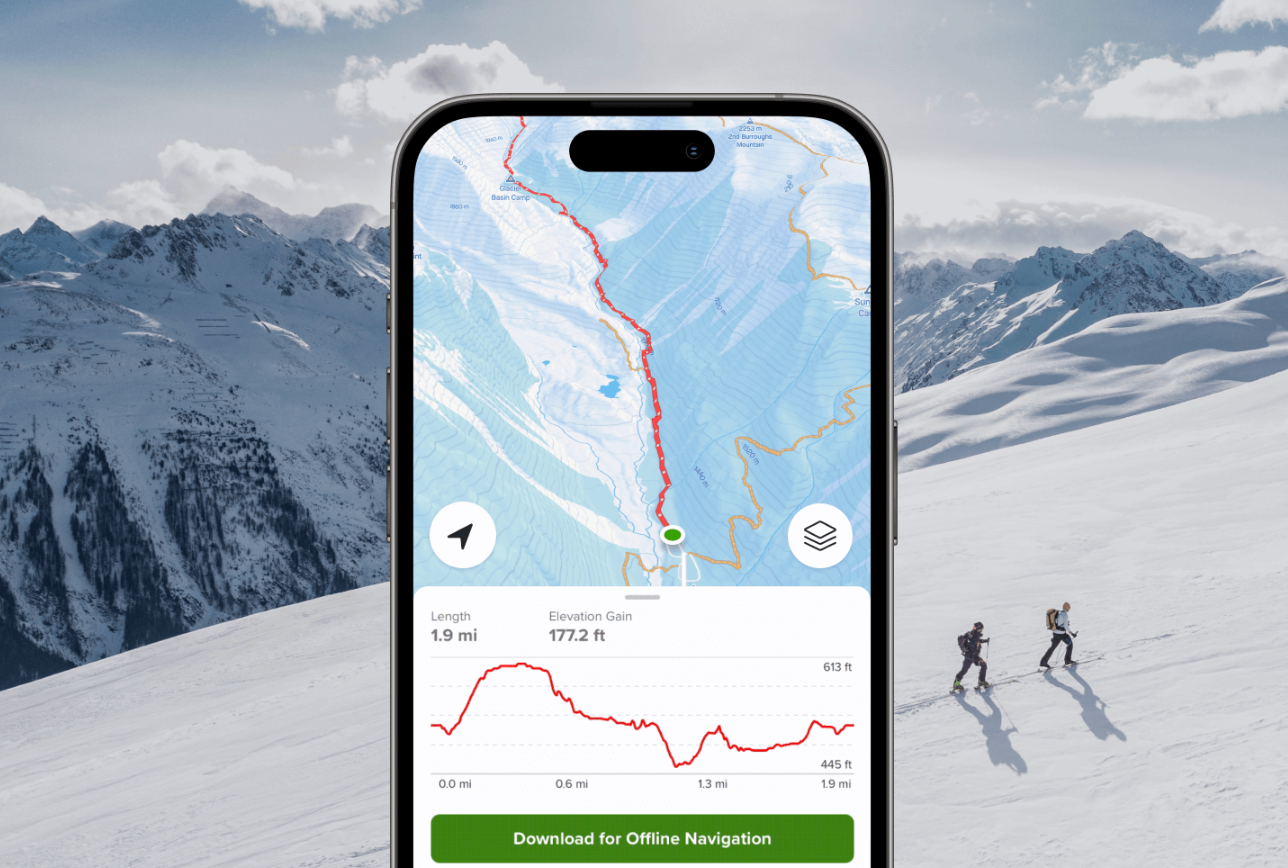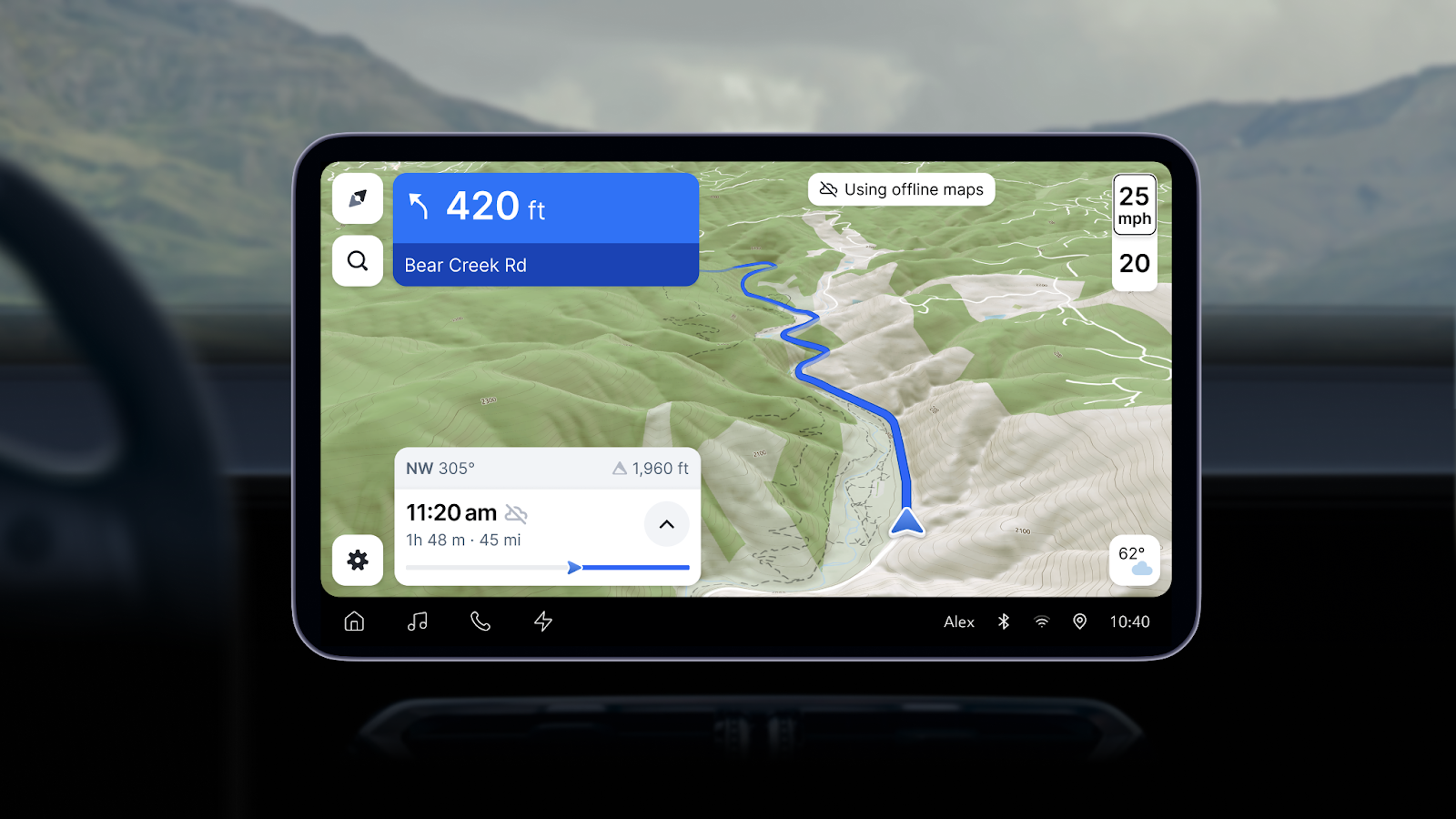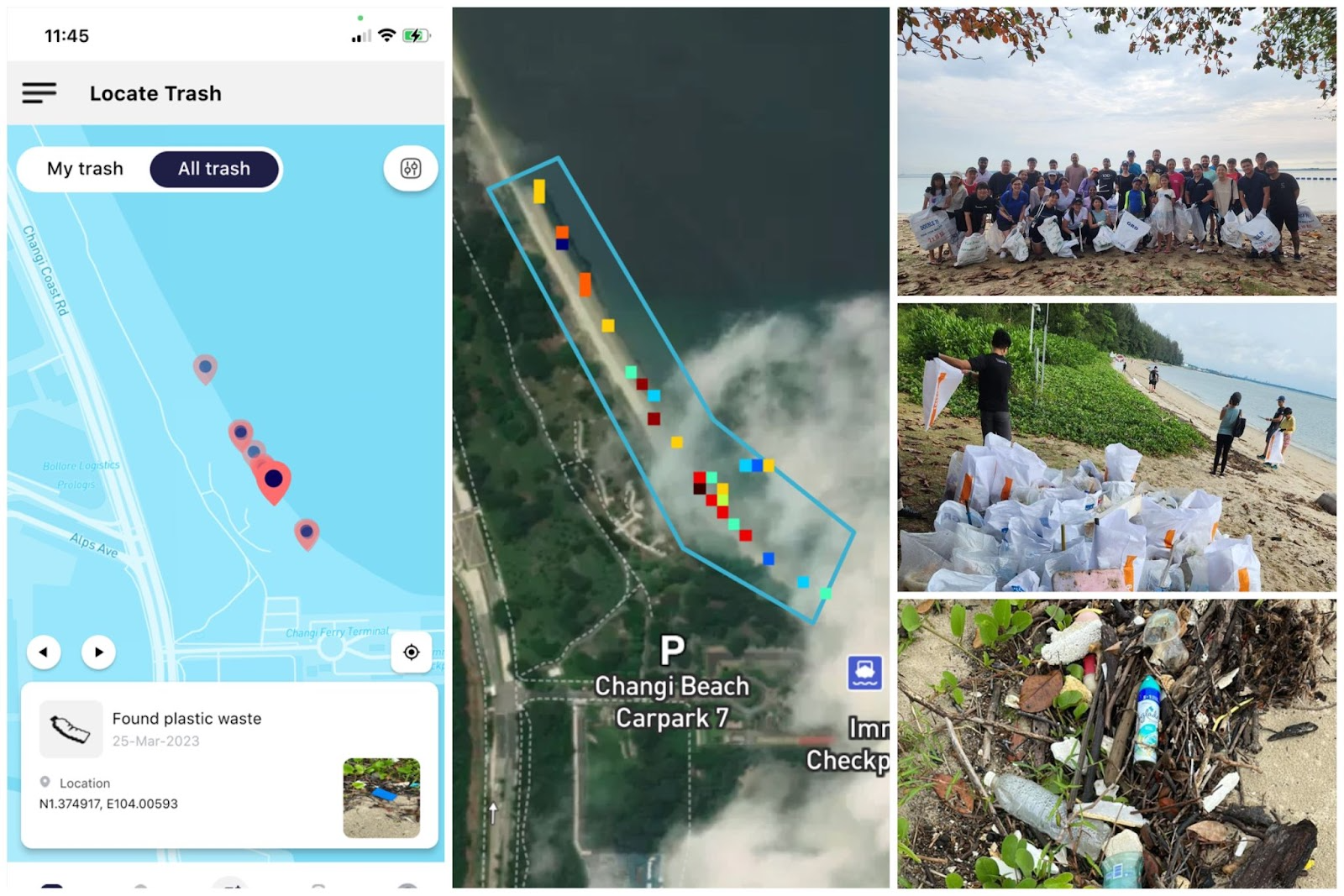Lorem ipsum dolor sit amet, consectetur adipiscing elit, sed do eiusmod tempor incididunt ut labore et dolore magna aliqua.
Do more with offline maps on mobile and embedded systems using the Mapbox Mobile Maps SDKs
Lorem ipsum dolor sit amet, consectetur adipiscing elit, sed do eiusmod tempor incididunt ut labore et dolore magna aliqua.
Do more with offline maps on mobile and embedded systems using the Mapbox Mobile Maps SDKs

The second version of Mapbox offline map tile packs now takes up to 40% less space. Improved tile pack size efficiency means that offline maps require less space on embedded hardware and mobile devices, without sacrificing coverage or detail. Mapbox customers can reallocate that saved space toward non-map related functions, or allow users to increase the coverage area or zoom level of maps when offline.
Offline maps are essential for apps used to navigate in the backcountry, on the water, or anywhere with spotty connectivity. Whether on a remote drive, a wilderness hike, or a downtown ride on a connected e-scooter, users need reliable maps that work even when the network doesn’t. With tile packs v2, customers can deliver offline-optimized map performance to keep their users on track.

More space efficient offline maps have many benefits. Mobile devices and hardware, such as automotive navigation systems, have finite storage space. Saving up to 40% of memory per map tile pack frees up space for expanded offline map coverage, or other non-map related functions. For OEMs, the extra space can be used for driver assistance functions and connected services — without increasing the original size of the application. For mobile applications, it can reduce the overall size of the app or be allocated to other functions.

Reduced tile sizes equate to less over-the-air data usage and therefore lower associated data costs for OEMs that cover the cost of data connectivity. Keeping data transfer costs low is key to maintaining an acceptable margin or competitive pricing. Smaller tile sizes can also allow for better map recency and expanded coverage without hurting margins.

Some automotive OEMs offer car models with no connectivity, and maps are uploaded during manufacturing. The reduced size of Mapbox offline tile packs means it takes less time to upload the offline map tiles during manufacturing. OEMs can now also choose to include expanded geographic coverage of offline maps during initial production, making it less likely that local dealerships or consumers will need to manually upload additional map geography specific to their location.
Reliable and space efficient offline maps are valuable far beyond in-car navigation and outdoor recreation apps. With smaller and less expensive offline maps, more companies can integrate offline map functionality into their applications or devices.

Micromobility companies can provide offline maps and navigation in dense urban areas where connectivity can be spotty. Applications that help EV drivers to find charging stations can provide reliable maps throughout an EV journey. Maritime customers can provide offline navigation maps on ships. Logistics, shipping, and trucking companies can ensure their custom driver applications support offline maps and navigation. More efficient offline map tile packs expand the offline options for all mobile app developers.
Mapbox offline tile packs v2 currently include offline tilesets for the Mapbox Streets-v8 and Auto-v1 tilesets, with support for additional tilesets coming in the future. Applications need to use the Mapbox Mobile Maps SDKs v11.16 or higher in order to access tile packs v2. Before going live with the v2 tile packs in an application, we recommend contacting Mapbox to discuss some best practices and considerations. Please reach out to your Account Manager or contact Mapbox here.
For end users, the transition to tile packs v2 is seamless and automatic. When a tile pack is requested, Mapbox returns a v2 tile pack if it is available. If it is not available, Mapbox will return a v1 tile pack which does not include the memory size optimization. Both versions work side-by-side without the need for application or configuration changes. For more information, see the Mapbox documentation regarding the offline manager for iOS and Android.
Lorem ipsum dolor sit amet, consectetur adipiscing elit, sed do eiusmod tempor incididunt ut labore et dolore magna aliqua.